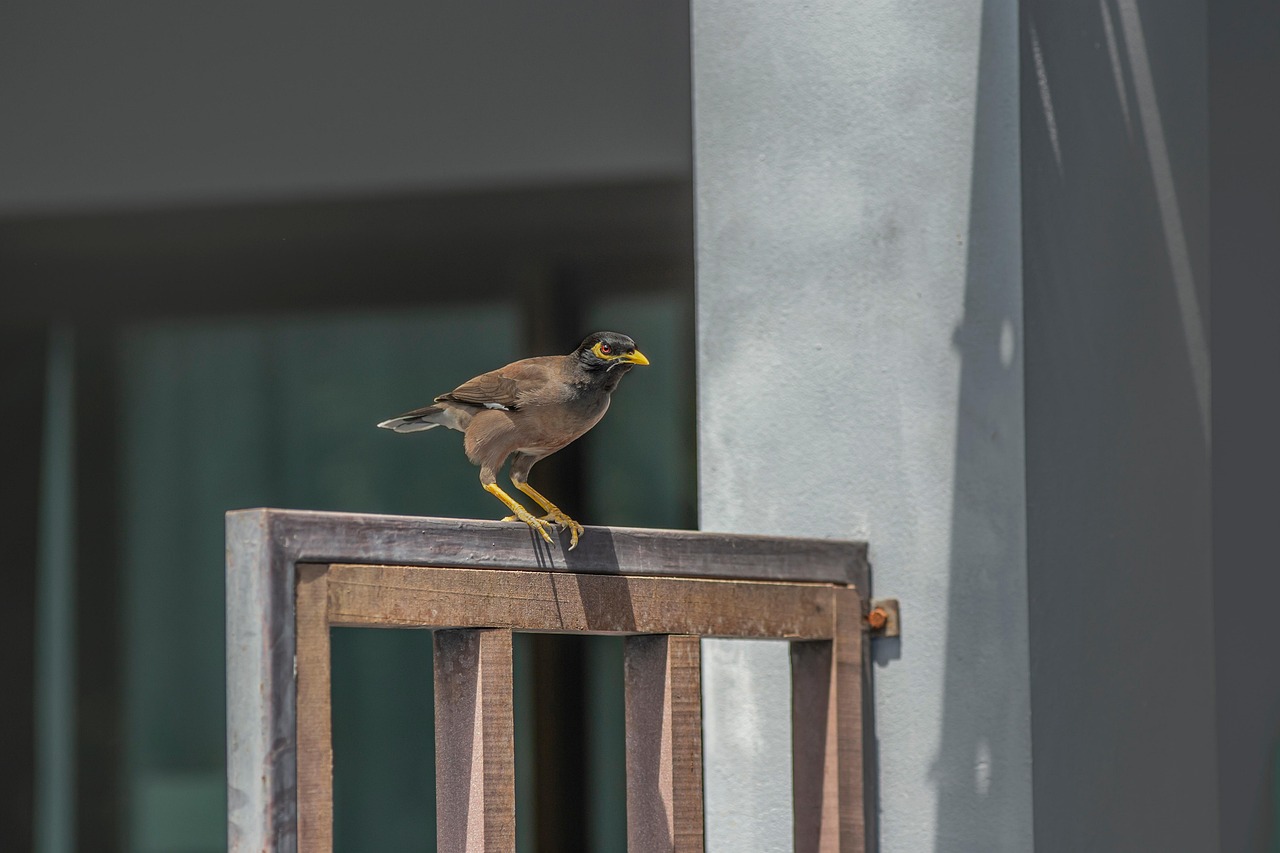Common Myna (Acridotheres tristis)
The Common Myna is a highly adaptable and intelligent bird known for its bold nature, loud calls, and ability to mimic human speech. Originally native to South Asia, it has successfully spread to many parts of the world, thriving in urban, agricultural, and natural environments. Often seen in pairs or small groups, the myna is a familiar sight in cities, where it scavenges for food and interacts closely with humans.
Physical Description
- Size: 23–26 cm (9–10 inches)
- Wingspan: 42 cm (16.5 inches)
- Weight: 110–140 g
- Plumage:
- Dark brown body with a black head.
- Bright yellow eye patch, legs, and beak.
- Distinctive white wing patches, visible in flight.
- Sexual Dimorphism:
- Males and females look similar, but males are slightly larger.
Habitat & Distribution
- Native to: South Asia (India, Pakistan, Nepal, Sri Lanka).
- Introduced to: Southeast Asia, Australia, the Middle East, Africa, and some Pacific islands.
- Habitat Preferences:
- Found in urban areas, towns, and villages.
- Also thrives in grasslands, farmlands, and open forests.
- Often seen near human settlements, feeding on scraps and insects.
Behavior & Diet
- Omnivorous: Eats a wide variety of food, including:
- Insects, worms, and small reptiles.
- Fruits, seeds, and grains.
- Human food scraps and garbage.
- Highly social: Often seen in pairs or small flocks.
- Aggressive & territorial: Competes fiercely with native birds for nesting sites.
- Vocal & intelligent:
- Has a wide range of calls, including whistles, squawks, and chatters.
- Can mimic human speech and other bird calls.
Breeding & Nesting
- Breeding Season: Varies by region, typically March–October.
- Nesting Sites:
- Uses tree cavities, buildings, and even air-conditioner ducts.
- Eggs:
- Lays 4–6 bluish-green eggs.
- Incubation:
- Around 13–18 days, mainly by the female.
- Fledging:
- Chicks leave the nest after 22–24 days.
Threats & Conservation
- Considered an invasive species in many regions.
- Threats:
- Competes with native bird species.
- Damages crops in agricultural areas.
- Spreads to new regions rapidly.
- Conservation Status:
- Least Concern (LC) on the IUCN Red List.
- Thriving globally due to its adaptability.
Interesting Facts
- The Common Myna is one of the few birds that can recognize itself in a mirror, a sign of intelligence.
- It was introduced to Australia and other regions to control pests but became an invasive species.
- Mynas often pair for life, staying with the same mate for years.
- In Hindu culture, it is considered a symbol of love because of its strong pair bonds.
Summary
The Common Myna (Acridotheres tristis) is a bold, adaptable, and intelligent bird found in urban and natural habitats worldwide. Known for its loud calls, mimicry skills, and social behavior, this species has successfully spread to many regions, sometimes at the cost of native birds. Despite being considered invasive in some areas, it remains a fascinating and highly resourceful species.
Views: 389
Subscribe to the newsletter:
